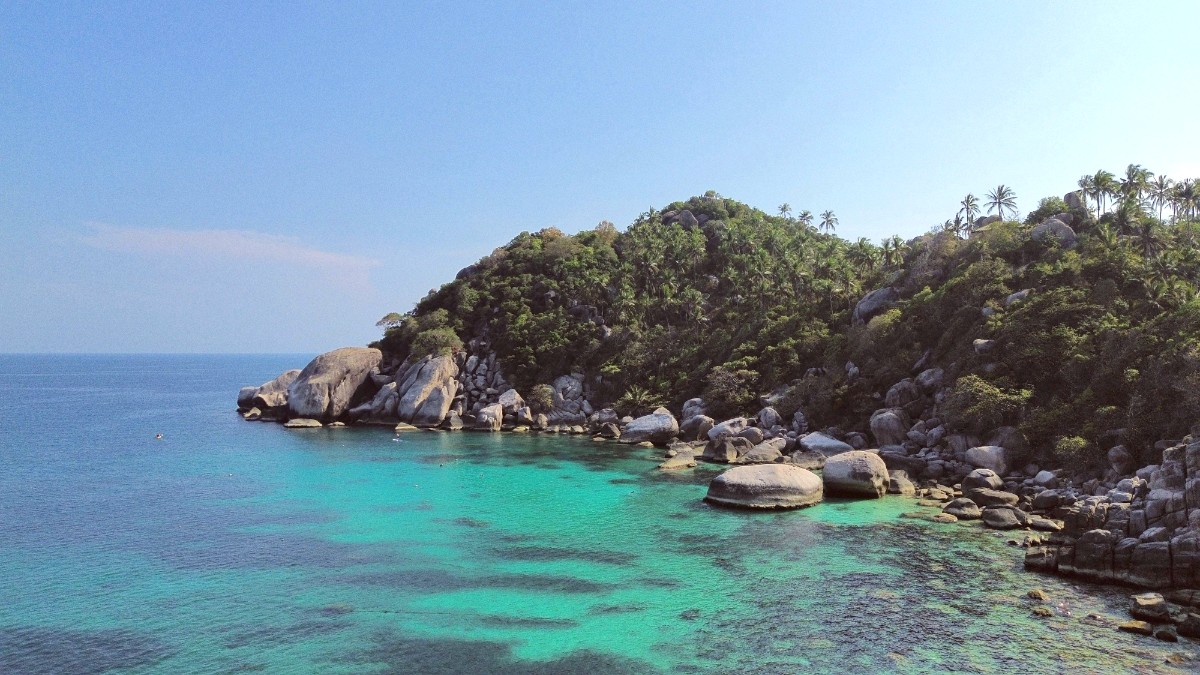
Lower Southern Gulf, Thailand
Ko Tao's transportation system differs from larger cities or mainland areas. The island does not have extensive public transit.
You rely on a mix of shared vehicles, rentals, and water transport.
Major ride-sharing apps like Grab are not widely used or effective on Ko Tao. Do not rely on them.
Thoroughly inspect the scooter before renting. Take photos or videos of any existing damage (scratches, dents) from all angles.
Some rental shops attempt to charge excessive fees for pre-existing damage upon return. Insist on a cash deposit rather than your passport.
Confirm your travel insurance covers scooter accidents if you plan to ride. Many tourists lack experience in these conditions.
Available, typically 100-150 THB per day. Suitable for shorter distances and flat areas. Not for the hilly interior.
Extremely limited and impractical due to island size, narrow roads, steep inclines. Focus on other transport options.
Drive on the left side of the road in Thailand. Helmet use is mandatory for scooters.
Main roads connecting Mae Haad, Sairee, and Chalok Baan Kao are mostly paved but can be steep and winding. Roads to viewpoints and remote bays are often unpaved or gravel.
Parking is generally informal. Park carefully to avoid obstructing traffic or private property.
Speed limits are not strictly enforced, but general caution is important due to road conditions and other traffic.
An International Driving Permit (IDP) is legally needed for foreigners to drive in Thailand.
Be aware of local driving styles, which can be assertive. Drunk driving is a significant issue.
Sairee Beach road and beachfront path are good for walking. Mae Haad and Chalok Baan Kao areas are also walkable.
Limited dedicated bicycle infrastructure. Cycling on main roads can be hazardous due to traffic and hills.
Remote, unpaved, or extremely steep roads are not recommended for walking or cycling, especially after dark.
Beyond standard options, Ko Tao has unique ways to travel, specifically on the water.
Embracing the unique transport mix of Ko Tao is part of the experience.
Whether you choose shared taxis, the freedom of a scooter, or the charm of a longtail boat, each choice presents a distinct way to explore the island.
Songthaews are generally safe, but hold on tight on turns and inclines. Scooter accidents are frequent; always wear a helmet.
Ko Tao's infrastructure presents significant challenges for travelers with mobility needs.
A few notes for smooth travels around Ko Tao.
Prepare for the island's unique conditions.
While not explicitly covered in this transport section, knowing local options for stay and food complements your travel planning.
Ko Tao has a wide array of hotels and resorts catering to various budgets and preferences.
Budget-friendly guesthouses and hostels are abundant, especially in Sairee Beach.
From street food to beachfront restaurants, Ko Tao has diverse dining options.
Ko Tao's food scene ranges from local Thai dishes to international cuisine.
Many restaurants on Ko Tao cater to various dietary preferences.
While transportation is a main focus, where you stay and eat significantly shapes your Ko Tao experience.
Plan these aspects to make your trip comfortable and delicious.
Final considerations to make your Ko Tao adventure seamless.
Especially during peak season, booking ferries and popular accommodations in advance is helpful.
Respect local culture and traditions to make your visit meaningful.
Prioritize your well-being on the island.
Travel insurance with medical coverage is highly recommended.
Thai Baht (THB) is the official currency.
Inform your bank of your travel plans to avoid card issues.
Stay connected during your trip.
Consider a portable power bank for day trips.
Call 1155 for tourism-related incidents or emergencies.
Call 191 for police, ambulance, or fire services.
Hospitals and clinics are on the island for medical needs.